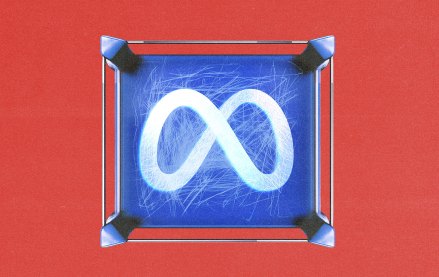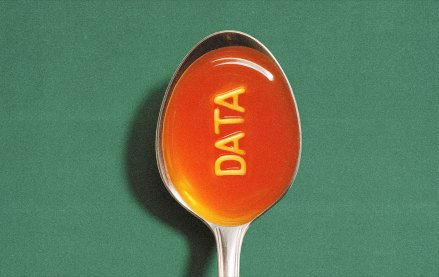Save 50% on a 3-month Digiday+ membership. Ends Dec 12.
Advertising Week Briefing: Creators emerge as the industry’s new power brokers

At this year’s Advertising Week, the ascendance of content creators within both the ad industry and wider culture is on full display.
Creators are everywhere at Advertising Week 2025 — from a range of creator-led sessions culminating with an onstage live taping of “Hot Ones,” to an Adobe-sponsored $25,000 creator pitch contest, to a session that featured YouTuber Dhar Mann creating a brand campaign for Gap Inc. in real time. This year, Advertising Week has four content tracks dedicated to creators — its highest number of creator tracks ever, per Advertising Week global president Ruth Mortimer — and a creator lounge sponsored by Meta.
“We’ve done private events built around creators, but I think this is the first time we’ve had someone who has wanted to come in and own a part of the show that’s just for creators,” Mortimer said.
Advertising Week has had creator-focused content tracks in past years, but the rising presence of content creators at this year’s event represents an evolution in how creators are engaging with advertisers. Instead of simply attending or participating in panels as invited speakers, creators are hosting brand activations and directly paying Advertising Week to put on sessions that they led and organized. Instead of being seen as a diversion from traditional or serious advertising, creators are staking their own claim to the advertising industry, framing themselves as essential players in the future of the space.
“Lots of creators don’t actually often work directly with brands; quite often, they will be part of a campaign, but once you’ve chosen your creative direction, eventually you’ll end up choosing a creator to promote your product,” Mortimer said. “What creators were saying to us was, ‘we want to be at the top of the funnel, helping companies co-collaborate and co-create the campaigns.’ So, that was really the inspiration for us leaning into it like this.”
TikTok and LinkedIn creator Gigi Robinson, who is speaking on a Tuesday panel and participating in Adobe’s pitch competition, is attending Advertising Week in-person for the first time this year. Although Robinson gained free access to the event as a speaker, she said that this year’s conference is more accessible to creators than any past iteration of Advertising Week, flagging the new creator delegate pass introduced this year, which gives discounted access to both the conference and its creator lounge to creators who meet certain benchmarks with regard to their following or brand partnership business.
“It’s still $750, but I’ve also seen comp opportunities,” Robinson said. “For example: ‘We’ll give you a creator delegate pass if you say you’re going to attend.’”
Marketer and content creator Natasha Badger said that she was excited to see her “worlds collide” at Advertising Week, having scheduled meetings with both her work team — Badger works in-house for the AI workflow company Akkio — and with fellow creators.
“After years of remote everything, in-person industry events like this feel more valuable than ever,” she said.
Eva Kirie, an Instagram and TikTok creator, said she was already planning to attend Advertising Week before Adobe invited her to participate in the pitch challenge on Thursday.
“Influencers know that there are opportunities for sponsorships, product collaborations, merchandise et cetera available if they take their social media content business seriously and attend industry events like Advertising Week,” she said.
Some of Advertising Week’s more traditional attendees from the brand and agency worlds have noted the growing presence of creators at the event — but they don’t feel threatened. Instead, they view it as a natural evolution, reflecting both creators’ growing importance in marketing and the changing roles of industry events, including both Advertising Week and other tentpole industry conferences.
“If you look at everything across MAGFest, South by Southwest and Cannes Lions, there’s been such a pivot with every large-scale event that appeals to marketers to have some benefit and some opportunity for creators,” said marketing consultant Sedge Beswick. “There’s obviously the twofold approach, which is creators wanting to understand more about the opportunities that they can have and how they can show up directly to marketers, being positioned more as media outlets.”
The increased diversity of topics in this year’s creator-led Advertising Week sessions also reflects an increasing level of sophistication across the industry regarding how marketers seek out creators and measure the performance of their campaigns and activations, per Beswick.
“When you have a show, you want to be partnering with people that understand what it is that you’re doing, and what your ambitions are,” she said. “That association and that affinity are only going to create better output and better data for both parties.”
3 Qs with Veylan co-founders on the next 5 years in the AI age
Right now, AI is permeating many different aspects of the publishing and advertising businesses (for better or worse). But what will these industries look like in the next five years?
Digiday caught up with Anthony Iacovone and Dirk Shaw, co-founders and CEO and CPO (respectively) of Veylan, a new AI operating system for advertising, on the ground at Advertising Week in New York City to chat about the future they’re imagining — and what publishers and advertisers have to do now to prepare for these changes.
One worry Shaw has? That AI slop proliferates in advertising. “Just because you can make more stuff, doesn’t mean you should. I think we’re going to see a lot more junk in the short term,” Shaw said.
This conversation has been edited and condensed.
In five years, how much content do you think will be synthetically generated, and how much will be created by humans?
Shaw: I’ll say that it [will be] 80% [AI-generated content]. But the 20% is going to be judgment and curation… This is where we’re moving to as a platform, is to not just have someone click a button [and be done with the job]… Ultimately what we’re trying to empower is just allowing people to operate in the cognitive space that is more valuable to businesses.
We’ve talked a lot about all this growth and the opportunities with AI technology. But there are also a lot of scary things happening, like AI chipping away at publishers’ traffic and their programmatic ad revenue. Don’t you think that’s a major challenge?
Iacovone: AI is eroding long-tail publishers… AI is going to have some negative consequences for certain businesses and have negative consequences for certain folks too. The way that we think about having empathy for our users is to really train them on what is next. You’re going to use these systems. You can’t sit in denial… Publishers might suffer from this, and there’s not much some of them can do… The reality is, if you just look five years from now — and I know people don’t want to talk about this — this industry will not look like this any longer.
Do you think AI will help businesses more with improving cost efficiencies or revenue generation?
Iacovone: Let’s say you built this full agentic system [into our business], you could technically, probably reduce expenses by 60-70%… Or you could set that foundation and grow the business and become a lot more productive… You don’t reduce people, you use those people, but you grow your business. On the other side of it, if you’re better at building strategies. You’re better at understanding consumers because of that data, and you’re better at executing in marketing — you gain revenue on one end by better sales proposals, better understanding, better strategy, and you retain more revenue by performing better.
Shaw: [Our AI system] helps with decoupling labor from growth.
Iacovone: We envision a future… in five to seven [years], instead of there being a 10,000 person, $40 billion agency, there’s potentially 10,000, $500 million agencies made up of two to four people. That’s the future… It’s hard to fathom that. But you won’t need those people that you would have typically hired. So you’re taking the best of what you do, using the agents to build your business out, and then using your relationships and what you’re good at, your skills to this powerful [entity]. — Sara Guaglione
Overheard
“I’m going to a Captiv8 event later, which is Publicis’s second influencer agency. It’s so hard to keep track of it all. Hold cos used to be pretty interchangeable. Now they all have different businesses… I wake up at 2 a.m. like ‘ah!’” – C-suite exec at a podcast platform
“Fox getting into podcasting – and being one of the bigger players – tells you all you need to know. Traditional publishers move too slow. They need to get their digital strategies in order.” – Analyst at a media advisory firm
More in Media

As big brands flood the podcast ad space, startups are refining strategies to stand out
While a influx of big advertisers is good news for podcast companies, it also makes it more challenging for small- to mid-sized brands to stand out in the space.

Meta enters AI licensing fray, striking deals with People Inc., USA Today Co. and more
The platform has secured seven multi-year deals with publishers including CNN, Fox News, People Inc., USA Today Co to incorporate their content into its large language model (LLM) Llama.

European publishers say the Digital Omnibus ‘cookie fix’ leaves them worse off
The European Union’s attempt at a legislative spring clean for Europe’s web of data privacy rules, has landed flat with publishers.








